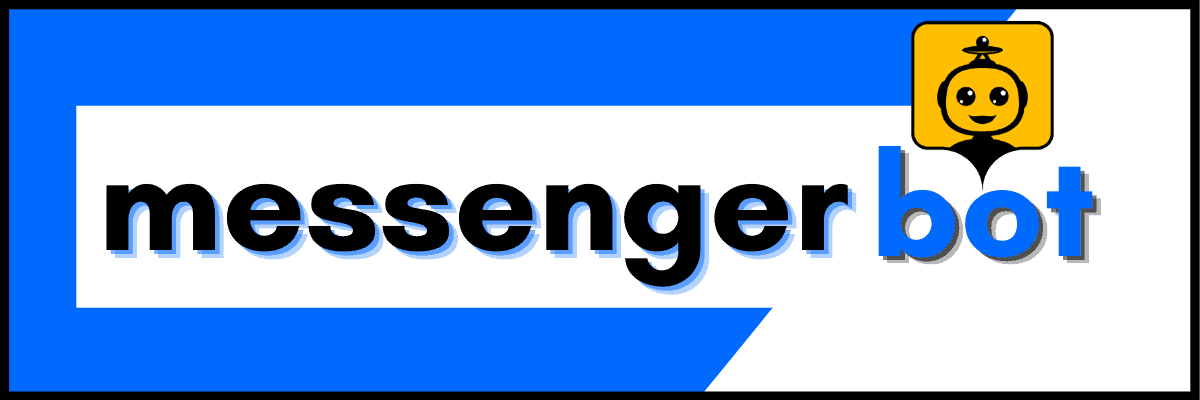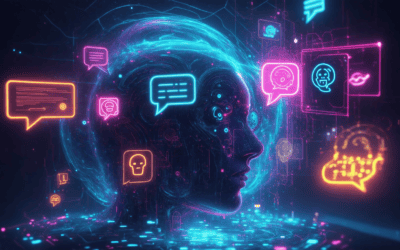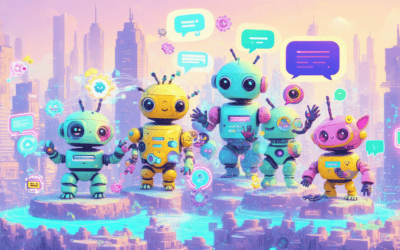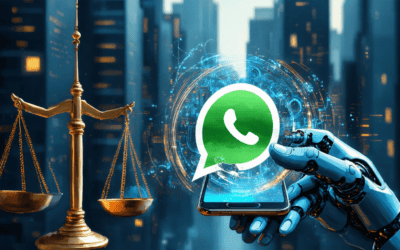In the rapidly evolving landscape of digital communication, chatbots have emerged as indispensable tools for businesses seeking to enhance customer engagement and streamline operations. As we delve into the essential features of chatbots, this comprehensive guide will unravel the intricacies of these AI-powered assistants, exploring their core functionalities, common elements, and the transformative impact of conversational AI technologies. From understanding the fundamental components that drive chatbot capabilities to examining the latest advancements in bot chat technology, we’ll navigate through the diverse spectrum of chatbot features and benefits. Whether you’re a business owner looking to integrate chat bot features into your customer support or a tech enthusiast curious about the future of chat with bot experiences, this article will equip you with the knowledge to master the world of chatbots and harness their potential in today’s digital ecosystem.
Understanding Chatbot Features
Chatbot features are the core functionalities that enable AI-powered software to engage in human-like conversations and perform various tasks. These features form the backbone of chatbot capabilities, allowing them to understand user queries, provide relevant responses, and execute actions based on user inputs. At Messenger Bot, we’ve developed a comprehensive suite of chatbot features designed to enhance customer interactions and streamline business operations.
What is a chatbot feature?
A chatbot feature is a specific functionality or capability that enables a bot chat to perform certain tasks or interact with users in a particular way. These features can range from basic text recognition to complex natural language processing and machine learning algorithms. Some essential chatbot features include:
- Natural Language Processing (NLP)
- Intent Recognition
- Contextual Understanding
- Multi-language Support
- Integration with External Systems
By leveraging these features, businesses can create powerful chat bots that provide personalized and efficient customer service experiences. For instance, our AI-powered chatbots can handle complex queries, automate repetitive tasks, and even generate leads, all while maintaining a conversational tone that keeps users engaged.
Core components of chatbot functionality
The core components of chatbot functionality are the building blocks that enable a chat with bot experience to be effective and user-friendly. These components work together to create a seamless interaction between the user and the AI. Key components include:
- User Interface: The front-end design that users interact with, typically a chat window or messaging platform.
- Natural Language Understanding (NLU): The ability to interpret and understand user input in natural language.
- Dialog Management: The system that manages the flow of conversation and determines appropriate responses.
- Knowledge Base: A repository of information that the chatbot can access to provide accurate responses.
- Integration Capabilities: The ability to connect with external systems and APIs for enhanced functionality.
At Messenger Bot, we’ve refined these core components to create chatbot features that not only meet but exceed user expectations. Our AI-driven chatbots are designed to provide intelligent, context-aware responses that can handle complex queries across multiple channels, including Facebook Messenger and Instagram.
By understanding these fundamental chatbot features and components, businesses can harness the full potential of conversational AI to enhance customer engagement, automate support processes, and drive growth. As we continue to innovate in the field of chatbot technology, we’re committed to providing cutting-edge solutions that help businesses stay ahead in the digital landscape.
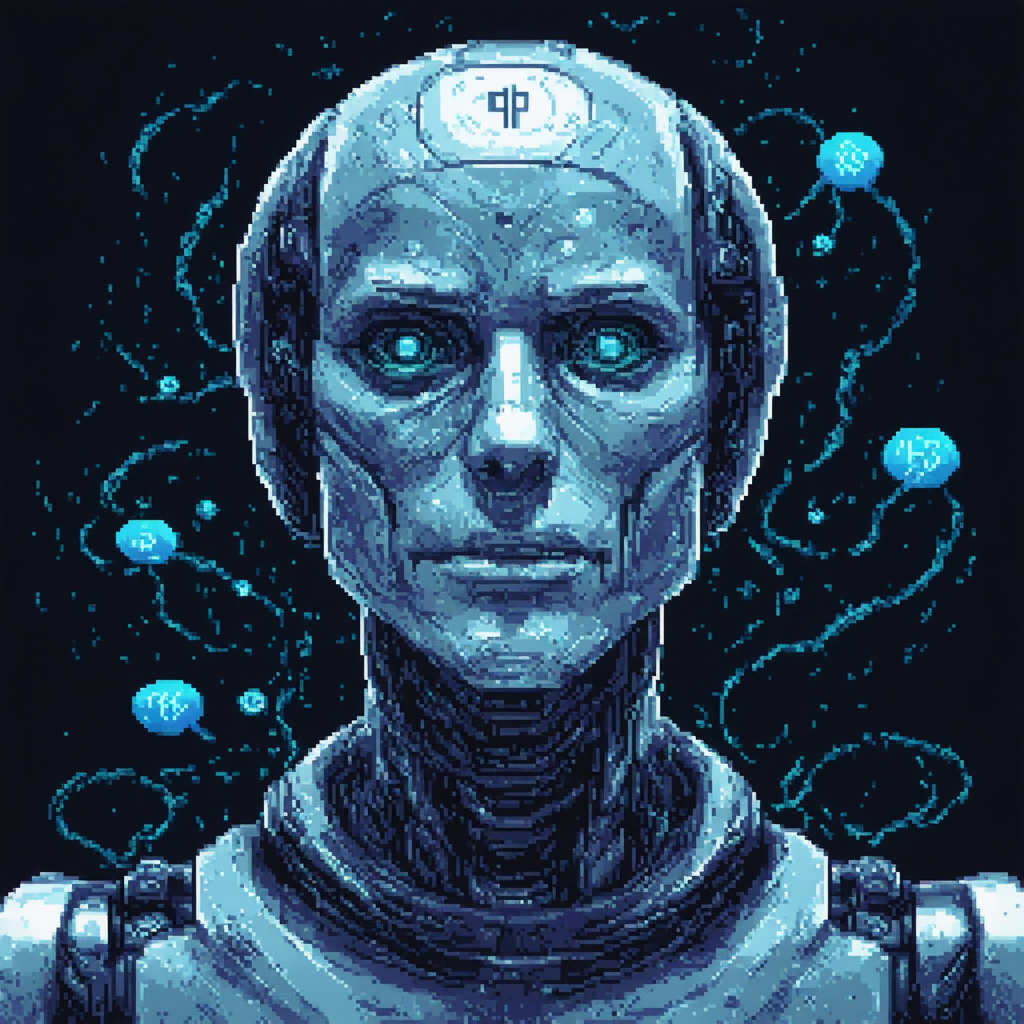
Essential Functions of AI Chatbots
AI chatbots have become integral to modern business operations, offering a wide array of features and capabilities that streamline customer interactions and enhance overall efficiency. As a leader in the chatbot industry, we at Messenger Bot understand the importance of these essential functions in delivering superior customer experiences.
What are the core functions of a chatbot?
The core functions of a chatbot encompass a range of capabilities designed to simulate human-like conversations and provide valuable assistance to users. These fundamental features include:
- Natural Language Processing (NLP): This allows chatbots to understand and interpret human language, enabling them to engage in more natural, context-aware conversations.
- Automated Responses: Chatbots can provide instant replies to common queries, ensuring 24/7 availability and reducing response times.
- Information Retrieval: They can quickly access and deliver relevant information from databases or knowledge bases, providing users with accurate and timely answers.
- Task Automation: Chatbots can perform various tasks such as scheduling appointments, processing orders, or updating customer information without human intervention.
- Multi-channel Support: Advanced chatbots like ours can operate across various platforms, including websites, social media, and messaging apps, ensuring consistent support across all customer touchpoints.
These core functions form the foundation of chatbot capabilities, enabling businesses to offer efficient and personalized customer service at scale.
Chatbot features and benefits for businesses
The implementation of chatbot features brings numerous benefits to businesses, revolutionizing customer service and operational efficiency. Some key advantages include:
- Cost Reduction: By automating routine inquiries and tasks, chatbots significantly reduce the workload on human agents, leading to substantial cost savings in customer support operations.
- Enhanced Customer Experience: With AI-powered customer service bots, businesses can provide instant, personalized responses, improving customer satisfaction and loyalty.
- Increased Engagement: Chatbots offer interactive and engaging experiences, encouraging customers to spend more time interacting with the brand and potentially increasing conversion rates.
- Data Collection and Analysis: Through conversations, chatbots gather valuable customer data and insights, helping businesses make informed decisions and tailor their offerings.
- Scalability: Unlike human agents, chatbots can handle multiple conversations simultaneously, allowing businesses to scale their support operations without proportionally increasing costs.
At Messenger Bot, we’ve designed our chatbot features to maximize these benefits, ensuring that businesses can leverage the full potential of AI-driven customer interactions. Our platform’s capabilities extend beyond basic chat functions, offering advanced features like multilingual support and integration with e-commerce tools, further enhancing the value proposition for businesses across various industries.
As the chatbot landscape continues to evolve, staying ahead of the curve with cutting-edge features is crucial. Platforms like Brain Pod AI are pushing the boundaries of what’s possible with conversational AI, offering sophisticated solutions that complement and enhance traditional chatbot functionalities. By leveraging these advanced chatbot features, businesses can not only meet but exceed customer expectations in today’s digital-first world.
III. Common Elements Across AI Chatbots
As the chatbot landscape evolves, certain features of chatbots have become standard across various platforms. These common elements form the backbone of modern chatbot functionality, ensuring a consistent and efficient user experience. Let’s explore the standardized capabilities that define today’s AI-powered chatbots.
A. What is a common feature among different AI chatbots?
One of the most prevalent features across AI chatbots is natural language processing (NLP). This technology enables chatbots to understand and interpret human language, allowing for more natural and context-aware conversations. NLP is the cornerstone that allows chatbots to parse user inputs, extract intent, and formulate appropriate responses.
Another universal feature is the ability to handle multiple queries simultaneously. Modern chatbots can engage in concurrent conversations with numerous users, providing scalable support without compromising on response time or quality. This capability is particularly valuable for businesses looking to enhance their customer support with conversational AI chatbots.
Integration with existing systems is also a common thread among AI chatbots. Whether it’s connecting to CRM databases, e-commerce platforms, or knowledge bases, chatbots are designed to seamlessly access and utilize information from various sources. This integration allows for more informed and personalized interactions, enhancing the overall user experience.
B. Standardized capabilities in modern chatbots
Modern chatbots come equipped with a range of standardized capabilities that cater to diverse business needs. One such capability is multi-channel support. Chatbots can now operate across various platforms, including websites, messaging apps, and social media, providing a consistent experience regardless of the user’s preferred communication channel.
Another standard feature is the ability to learn and improve over time. Through machine learning algorithms, chatbots can analyze past interactions to refine their responses and become more accurate in addressing user queries. This continuous improvement is crucial for maintaining the relevance and effectiveness of chatbot interactions.
Automated workflows have also become a staple in chatbot functionality. These AI-driven chatbots can guide users through complex processes, such as booking appointments, making purchases, or troubleshooting issues, by breaking them down into manageable steps. This capability significantly enhances user engagement and streamlines various business operations.
Lastly, analytics and reporting have become indispensable features of modern chatbots. These tools provide valuable insights into user behavior, common queries, and bot performance, allowing businesses to make data-driven decisions to optimize their chatbot strategies. Platforms like Zendesk have integrated these analytics capabilities into their chatbot solutions, enabling businesses to track and improve their customer service metrics continuously.
By incorporating these common elements and standardized capabilities, AI chatbots have become powerful tools for businesses looking to enhance their customer engagement strategies. As the technology continues to evolve, we can expect even more sophisticated features to emerge, further revolutionizing the way businesses interact with their customers.
IV. Conversational AI Technologies
Conversational AI technologies are revolutionizing the way businesses interact with their customers. These advanced features of chatbots are designed to provide seamless, human-like interactions that can significantly enhance user experience and streamline customer service operations.
A. Which feature do most conversational chatbots utilize?
The cornerstone feature that most conversational chatbots utilize is Natural Language Processing (NLP). This sophisticated technology allows chatbots to understand and interpret human language in a contextual manner. By leveraging NLP, chatbots can comprehend user intent, decipher complex queries, and provide relevant responses, making the interaction feel more natural and engaging.
Another crucial feature is Machine Learning (ML), which enables chatbots to learn from each interaction and continuously improve their responses over time. This adaptive capability ensures that the chatbot’s performance is optimized, leading to more accurate and helpful conversations with users.
B. Advanced chatbot features enhancing user interactions
Modern chatbots are equipped with a range of advanced features that significantly enhance user interactions:
- Sentiment Analysis: This feature allows chatbots to detect and respond to user emotions, enabling more empathetic and personalized interactions.
- Multi-language Support: Many chatbots now offer multilingual capabilities, breaking down language barriers and allowing businesses to serve a global audience effectively.
- Context Retention: Advanced chatbots can maintain context throughout a conversation, providing more coherent and relevant responses over extended interactions.
- Integration Capabilities: Chatbots can seamlessly integrate with various business systems, such as CRM platforms or e-commerce systems, to provide more comprehensive and efficient service.
At Messenger Bot, we’ve incorporated these advanced features into our AI-powered chatbot solution. Our platform utilizes cutting-edge NLP and ML technologies to deliver intelligent, context-aware conversations that can significantly improve customer engagement and satisfaction.
While there are several chatbot providers in the market, such as Drift and Intercom, it’s essential to choose a solution that aligns with your specific business needs and goals. Our Messenger Bot platform offers a unique combination of advanced features and user-friendly interface, making it an excellent choice for businesses looking to enhance their customer interactions through conversational AI.
By leveraging these advanced chatbot features, businesses can create more engaging, efficient, and personalized customer experiences. As conversational AI technologies continue to evolve, we can expect even more sophisticated chatbot capabilities that will further transform the landscape of customer service and engagement.

V. Evolving Landscape of Chatbot Capabilities
The features of chatbots are rapidly evolving, transforming the way businesses interact with their customers. As AI technology advances, chatbots are becoming more sophisticated, offering enhanced capabilities that revolutionize customer service and engagement strategies.
One of the most significant developments in chatbot features is the integration of natural language processing (NLP) and machine learning algorithms. These technologies enable chatbots to understand context, sentiment, and intent, allowing for more nuanced and human-like conversations. This advancement has dramatically improved the user experience, making interactions with chatbots feel more natural and less robotic.
Another key innovation is the ability of chatbots to handle complex queries and perform tasks across multiple platforms. Modern chatbots can seamlessly integrate with various systems, from CRM databases to e-commerce platforms, providing a unified experience for users regardless of the channel they choose to engage on.
A. Latest chatbot features revolutionizing customer service
The latest chatbot features are transforming customer service by offering personalized, efficient, and round-the-clock support. Here are some of the most impactful innovations:
1. Multilingual Support: Multilingual chatbots can communicate in various languages, breaking down language barriers and enabling businesses to serve a global audience effectively.
2. Sentiment Analysis: Advanced chatbots can now detect and respond to user emotions, allowing for more empathetic and tailored interactions.
3. Proactive Engagement: Instead of waiting for users to initiate contact, chatbots can now proactively reach out to customers based on their behavior or preferences, offering assistance or relevant information.
4. Omnichannel Integration: Modern chatbots can maintain context across multiple channels, providing a seamless experience whether the customer is on a website, mobile app, or social media platform.
5. Voice Recognition: Some chatbots now incorporate voice recognition technology, allowing for voice-based interactions that cater to users who prefer speaking over typing.
These features have significantly enhanced the capabilities of chatbots, making them invaluable tools for businesses looking to improve their customer service and engagement strategies.
B. ChatGPT and its impact on bot chat technology
The introduction of ChatGPT has had a profound impact on bot chat technology, setting new standards for what’s possible in AI-driven conversations. ChatGPT, developed by OpenAI, uses advanced language models to generate human-like responses, pushing the boundaries of what chatbots can achieve.
One of the most significant impacts of ChatGPT on bot chat technology is the improvement in conversational fluency. ChatGPT-powered bots can engage in more natural, context-aware dialogues, understanding and responding to complex queries with unprecedented accuracy. This has raised user expectations for chatbot interactions across the board.
ChatGPT has also demonstrated the potential for chatbots to assist with a wider range of tasks, from creative writing to problem-solving. This versatility is inspiring businesses to explore new applications for chatbots beyond traditional customer service roles.
However, it’s important to note that while ChatGPT represents a significant leap forward, it’s not without limitations. Businesses must still carefully consider how to implement AI chatbots to ensure they align with brand values and maintain accuracy in specific domains.
At Messenger Bot, we’re continuously innovating to incorporate the latest advancements in AI technology, including lessons learned from ChatGPT, to enhance our chatbot capabilities. Our goal is to provide businesses with cutting-edge chatbot features that deliver exceptional customer experiences while maintaining the reliability and control that our clients expect.
As the landscape of chatbot capabilities continues to evolve, staying informed about the latest features and technologies is crucial for businesses looking to leverage chatbots effectively. By embracing these advancements, companies can create more engaging, efficient, and personalized customer interactions, ultimately driving satisfaction and loyalty.
VI. Implementing Chatbots in Business
Implementing chatbots in business has become a game-changer for many companies looking to enhance their customer support and engagement strategies. As a powerful tool in our digital arsenal, chatbots offer a range of features that can significantly improve customer interactions and streamline operations.
A. Integrating chat bot features into customer support
Integrating chatbot features into customer support systems can revolutionize the way businesses interact with their clients. By leveraging advanced AI and natural language processing capabilities, chatbots can handle a wide array of customer inquiries efficiently and effectively.
One of the key features of chatbots that makes them invaluable for customer support is their ability to provide instant responses 24/7. This round-the-clock availability ensures that customers can get help whenever they need it, significantly improving satisfaction rates and reducing wait times.
Another crucial aspect of chatbot integration is the ability to handle multiple conversations simultaneously. Unlike human agents who can typically manage only one or two chats at a time, chatbots can engage with hundreds of customers concurrently, drastically reducing queue times and improving overall efficiency.
Personalization is also a standout feature of modern chatbots. By analyzing customer data and interaction history, chatbots can tailor their responses to individual preferences, creating a more engaging and personalized experience. This level of customization can lead to increased customer loyalty and higher conversion rates.
Moreover, chatbots can seamlessly integrate with existing customer relationship management (CRM) systems, allowing for a more holistic view of customer interactions. This integration enables businesses to track customer journeys, gather valuable insights, and provide more targeted support.
B. Maximizing the potential of chatbots features
To truly maximize the potential of chatbot features, businesses need to adopt a strategic approach that goes beyond basic implementation. Here are some key strategies to unlock the full power of chatbot capabilities:
1. Continuous Learning and Improvement: Utilize machine learning algorithms to continuously improve the chatbot’s responses based on user interactions. This ensures that the bot becomes more accurate and helpful over time.
2. Omnichannel Integration: Implement chatbots across multiple platforms, including websites, mobile apps, and social media channels. This omnichannel approach ensures consistent customer experiences regardless of the chosen communication channel.
3. Human Handoff Capability: While chatbots can handle many queries, some situations require human intervention. Implementing a smooth handoff process from bot to human agent ensures that complex issues are addressed effectively.
4. Proactive Engagement: Use chatbots to initiate conversations based on user behavior or predefined triggers. This proactive approach can help guide customers through the sales funnel or provide timely support.
5. Analytics and Reporting: Leverage the data collected by chatbots to gain insights into customer preferences, common issues, and areas for improvement. This data-driven approach can inform business decisions and help refine the chatbot’s performance.
6. Multilingual Support: Implement multilingual capabilities to cater to a global audience. This feature can significantly expand your customer base and improve international customer support.
7. Integration with Backend Systems: Connect chatbots with inventory management, order tracking, and other backend systems to provide real-time information to customers without human intervention.
By focusing on these strategies, businesses can harness the full potential of chatbot features, leading to improved customer satisfaction, increased efficiency, and ultimately, better business outcomes. As chatbot technology continues to evolve, staying ahead of the curve in implementation and optimization will be crucial for maintaining a competitive edge in customer service and engagement.
VII. Future Trends in Chatbot Development
As we look ahead, the landscape of chatbot features is rapidly evolving, driven by advancements in artificial intelligence and changing user expectations. At Messenger Bot, we’re constantly innovating to stay ahead of these trends and provide cutting-edge chatbot features that revolutionize customer interactions.
The future of chatbot development is shaping up to be incredibly exciting, with new capabilities emerging that promise to transform the way businesses engage with their customers. From more human-like conversations to predictive analytics, the next generation of chatbots will offer unprecedented levels of personalization and efficiency.
A. Emerging technologies shaping chat with bot experiences
Several emerging technologies are set to redefine chat with bot experiences, enhancing their ability to understand and respond to user needs:
- Natural Language Processing (NLP) Advancements: Improvements in NLP will enable chatbots to better understand context, tone, and even sarcasm, leading to more natural and engaging conversations.
- Emotion AI: The integration of emotion recognition technology will allow chatbots to detect and respond to users’ emotional states, providing more empathetic and personalized interactions.
- Voice and Visual Recognition: As voice assistants like Alexa and Siri have shown, the future of chatbots includes seamless voice interactions. Additionally, visual recognition capabilities will enable chatbots to process and respond to images and videos.
- Augmented Reality (AR) Integration: Chatbots will leverage AR to provide immersive customer experiences, such as virtual product try-ons or interactive troubleshooting guides.
These advancements will significantly enhance the user experience, making interactions with chatbots more intuitive and valuable. At Messenger Bot, we’re excited to incorporate these technologies into our platform, ensuring our users stay at the forefront of chatbot innovation.
B. Predictions for next-generation chatbot capabilities
Looking ahead, we anticipate several groundbreaking capabilities that will define the next generation of chatbots:
- Predictive Customer Service: Chatbots will use machine learning algorithms to anticipate customer needs and proactively offer solutions before issues arise.
- Seamless Omnichannel Integration: Future chatbots will provide consistent experiences across multiple platforms, from social media to websites and mobile apps, with context carried over seamlessly.
- Advanced Personalization: By leveraging big data and AI, chatbots will offer hyper-personalized interactions, tailoring responses and recommendations to individual user preferences and behaviors.
- Autonomous Learning and Improvement: Next-gen chatbots will continuously learn from interactions, improving their responses and expanding their knowledge base without human intervention.
- Blockchain Integration: For industries requiring high security, blockchain technology will be integrated to ensure secure and transparent chatbot interactions, particularly in financial services and healthcare.
As these capabilities become reality, businesses using platforms like Messenger Bot will be able to offer unparalleled customer experiences. Our free trial offer allows companies to explore these emerging features and stay ahead of the curve in chatbot technology.
The future of chatbot development is bright, with innovations that promise to make bot chats more intelligent, empathetic, and valuable to both businesses and customers. As we continue to enhance our chatbot features, we’re committed to helping businesses leverage these advancements to create meaningful connections with their audiences.
While competitors like Drift and Intercom are also working on innovative features, we at Messenger Bot are dedicated to staying at the forefront of these developments, ensuring our users have access to the most advanced chatbot capabilities available.
